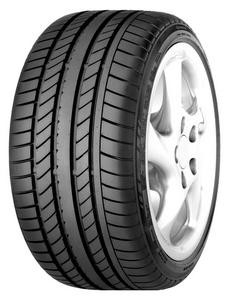As most know, a tyre is the component fitted to a wheel’s rim, allowing the transfer of a vehicles load from an axle, through the wheel, and into the ground. This is useful in providing traction over a surface, allowing the vehicle’s movement.
It is, therefore, a crucial component of most vehicles, and it follows that tyre maintenance is an important aspect of car maintenance and roadworthiness as a whole. This article will cover the necessary procedures to ensure that your tyre grip, tyre pressures, tyre wear, and tyre tread are acceptable.
Maintaining Correct Tyre Pressures
One of the simpler aspects of tyre maintenance, but of critical importance, are correct tyre pressures. Be sure to check your tyre pressure once a month; even more if you commute or travel over long distances. It’s also a good idea to ensure that your tyre pressures are at their recommended level before long trips.
Low tyre pressures contribute to a number of potential problems. Increased fuel consumption, increased tyre wear, and greater vulnerability to spinning out of control or blowing a tyre being are just a few examples. To find out what the correct tyre pressures for your vehicle are, you can find a sticker with the relevant information inside the driver’s side door of the vehicle.
Tyre Tread
Tyre tread is another fundamental consideration in tyre maintenance. The tread of a tyre, when functioning as designed, allows the vehicle to retain traction and grip on the road. Tyre tread needs to remain in good condition, as a worn tread leads to a number of issues and potential safety hazards.
The more worn your tyre tread, the easier it is for your car to lose its grip and slide out of control. A particularly dangerous consequence of a worn tyre tread that you risk is aquaplaning. Aquaplaning occurs when a layer of water builds up between a vehicle’s tyres and the surface of the road, leading to a loss of traction. When this happens, the vehicle will lose control and likely crash.
Proper Alignment ensures Tyre Grip
In practicing good tyre maintenance and promoting tyre grip, alignment is another important aspect. Proper alignment ensures that all the wheels on a vehicle are pointed in the optimum direction in relation to the road. Tyre grip relies on, among other factors, effective wheel alignment.
Tyres on a misaligned vehicle will have several negative impacts on tyre grip and the tyres themselves. One can expect degraded vehicle handling, and tyres that don’t wear equally, which results in reduced tread life. As an added detriment, reduced tyre tread will have a pronounced impact on tyre grip.
Other Tips for Reducing Tyre Wear
There are a few other things you can do in the interests of tyre maintenance. One is rotating your tyres. Switching your front tyres with the rear ones every 7 000 – 11 000km is an excellent way to equalise your vehicle’s tyre wear.
When buying a pair of new tyres, be certain to install (or have them installed) on the rear wheels. This isn’t as much to prevent tyre wear as much as it is a safety precaution, as on wet roads, traction is always lost in the rear tyres first. This applies to front-wheel, rearwheel, and all-wheel drive vehicles.
Published: just now
Total Views: 1.07k

